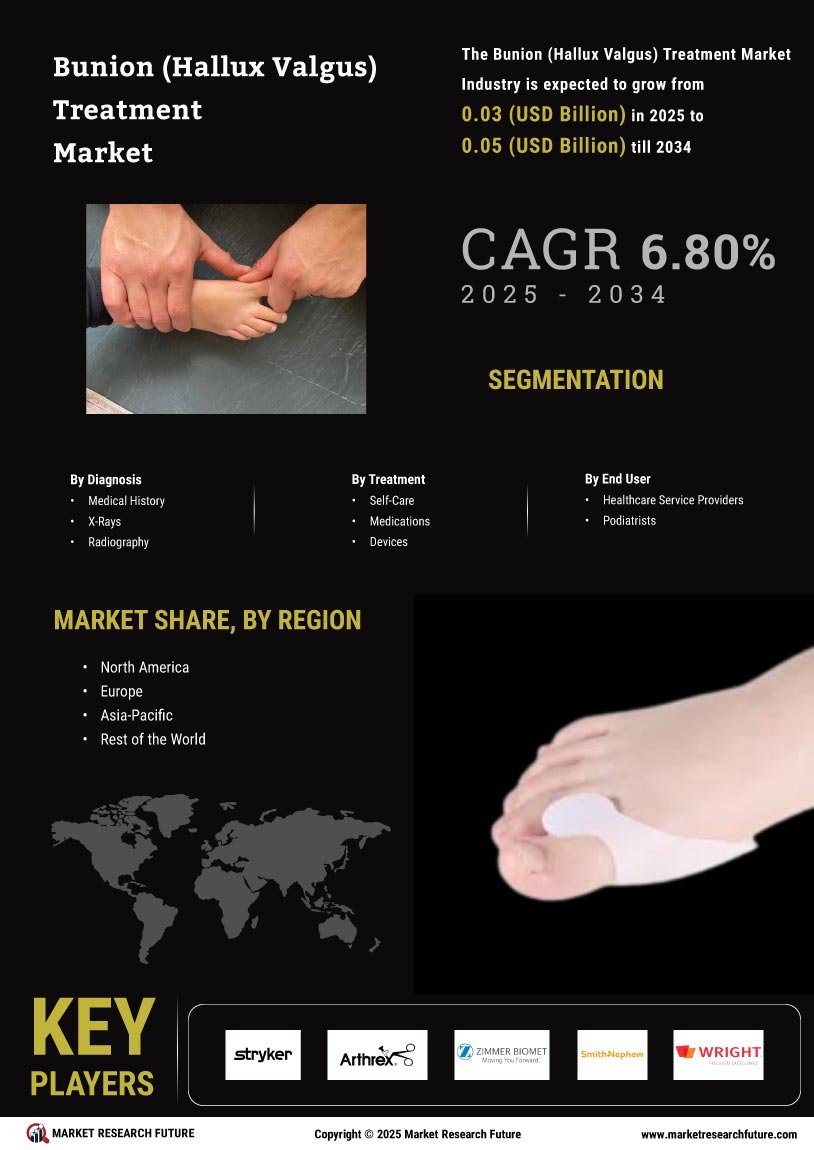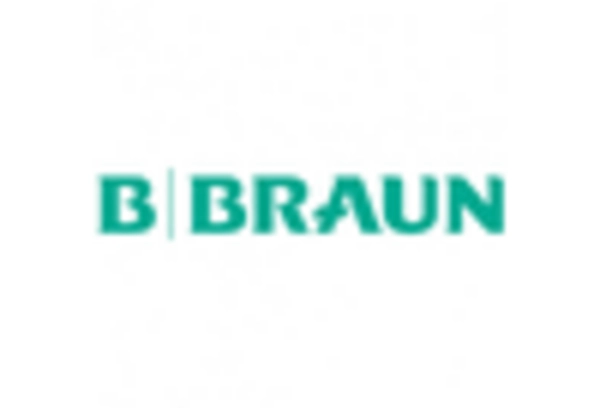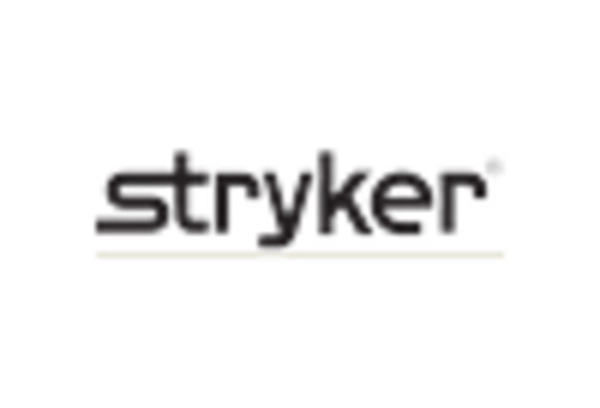The Bunion Treatment Market is characterized by a competitive landscape that is increasingly shaped by innovation, strategic partnerships, and a focus on patient-centric solutions. Key players such as B. Braun Melsungen AG (DE), Stryker Corporation (US), and Zimmer Biomet Holdings, Inc. (US) are actively engaged in enhancing their product offerings and expanding their market presence. B. Braun Melsungen AG (DE) emphasizes innovation in minimally invasive surgical techniques, which aligns with the growing demand for less invasive treatment options. Meanwhile, Stryker Corporation (US) focuses on technological advancements in orthopedic devices, positioning itself as a leader in the integration of digital solutions within bunion treatment. Zimmer Biomet Holdings, Inc. (US) adopts a comprehensive approach, combining product development with strategic acquisitions to bolster its market share and enhance its service capabilities.
The business tactics employed by these companies reflect a nuanced understanding of the market's structure, which is moderately fragmented yet increasingly competitive. Localizing manufacturing and optimizing supply chains are pivotal strategies that these companies leverage to enhance operational efficiency and reduce costs. The collective influence of these key players fosters a dynamic environment where innovation and responsiveness to market needs are paramount, thereby shaping the overall competitive structure of the market.
In November 2025, Stryker Corporation (US) announced the launch of a new line of advanced orthopedic implants specifically designed for bunion correction. This strategic move is significant as it not only expands their product portfolio but also reinforces their commitment to addressing the evolving needs of patients and healthcare providers. By integrating cutting-edge technology into their implants, Stryker aims to improve surgical outcomes and patient satisfaction, thereby solidifying its competitive edge in the market.
In October 2025, Zimmer Biomet Holdings, Inc. (US) entered into a strategic partnership with a leading telehealth provider to enhance post-operative care for bunion surgery patients. This collaboration is noteworthy as it reflects a growing trend towards digital health solutions, enabling better patient monitoring and engagement. By leveraging telehealth capabilities, Zimmer Biomet seeks to improve recovery times and reduce complications, which could potentially lead to increased patient loyalty and market share.
In September 2025, B. Braun Melsungen AG (DE) unveiled a new educational initiative aimed at training healthcare professionals in the latest minimally invasive techniques for bunion treatment. This initiative underscores the company's commitment to not only advancing its product offerings but also enhancing the overall quality of care in the bunion treatment space. By investing in education, B. Braun positions itself as a thought leader, fostering trust and credibility among healthcare providers.
As of December 2025, the competitive trends within the Bunion Treatment Market are increasingly defined by digitalization, sustainability, and the integration of artificial intelligence (AI) in treatment protocols. Strategic alliances are becoming more prevalent, as companies recognize the value of collaboration in driving innovation and improving patient outcomes. Looking ahead, the competitive differentiation in this market is likely to evolve from traditional price-based competition towards a focus on technological advancements, innovative treatment solutions, and reliable supply chains. This shift suggests that companies that prioritize research and development, alongside strategic partnerships, will be better positioned to thrive in an increasingly complex and competitive landscape.

















Leave a Comment